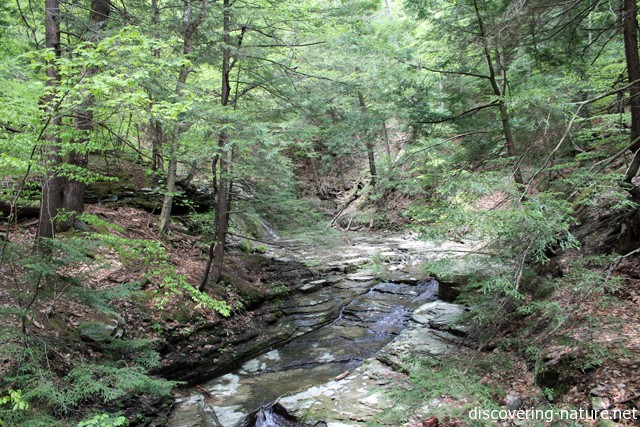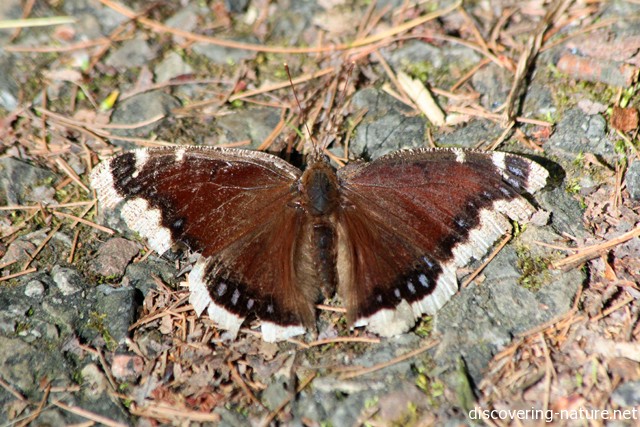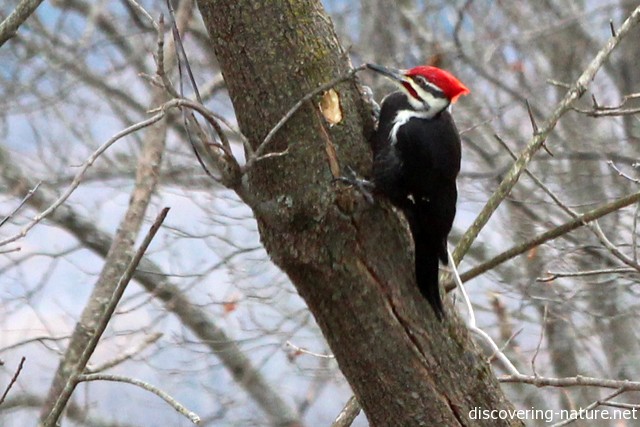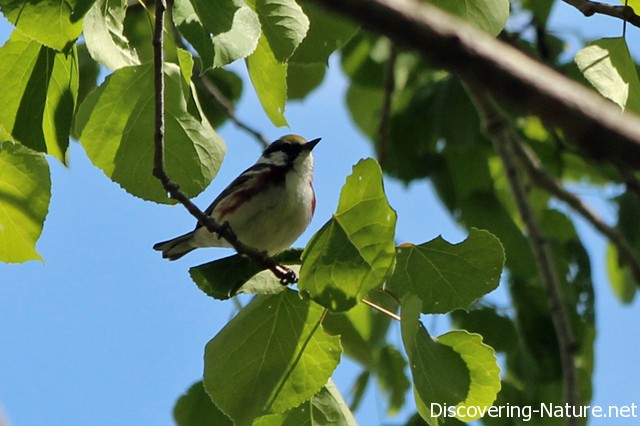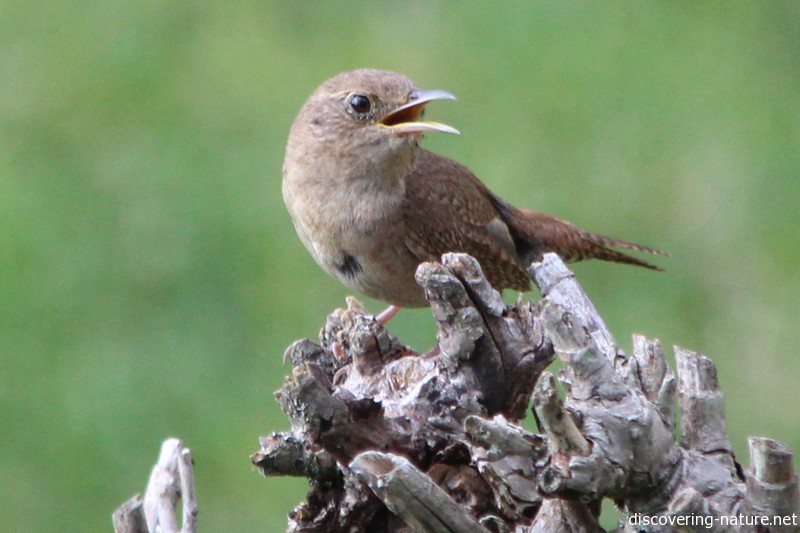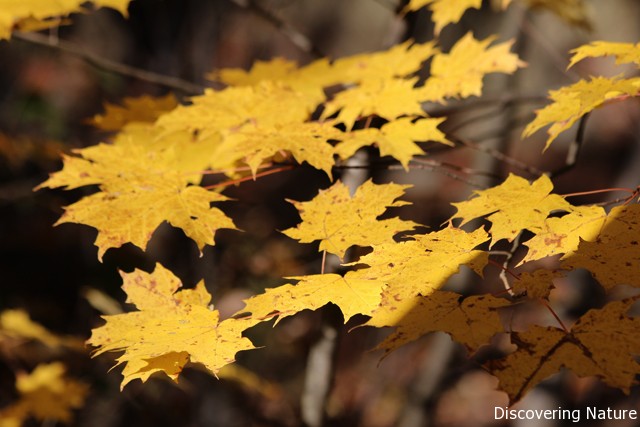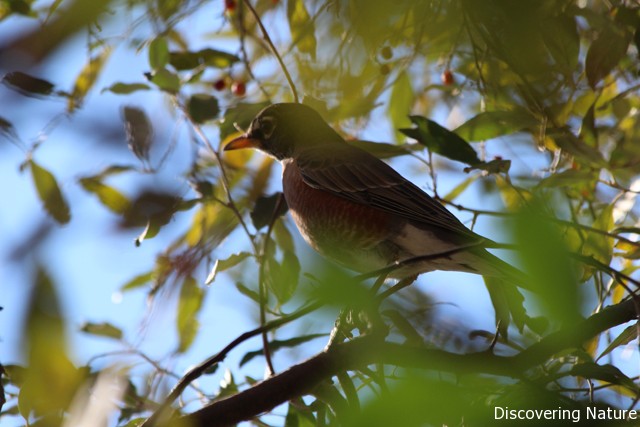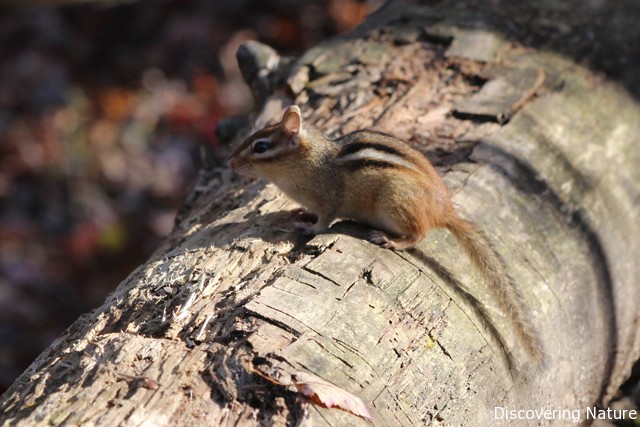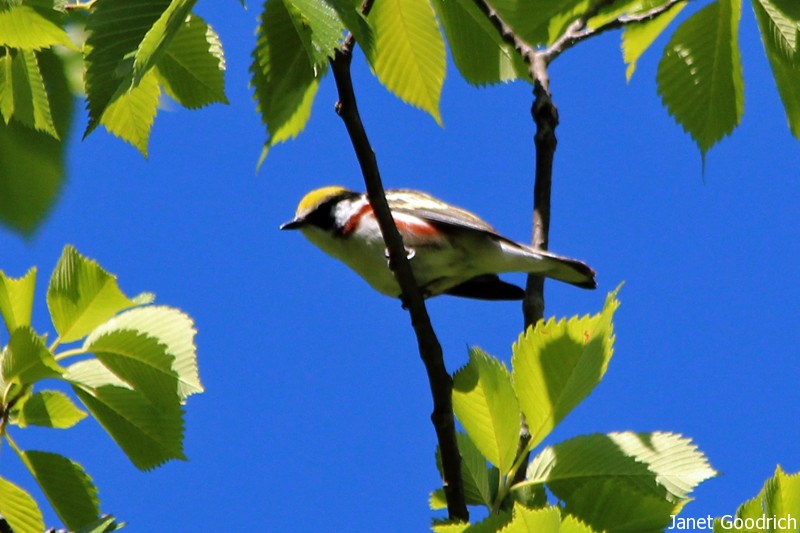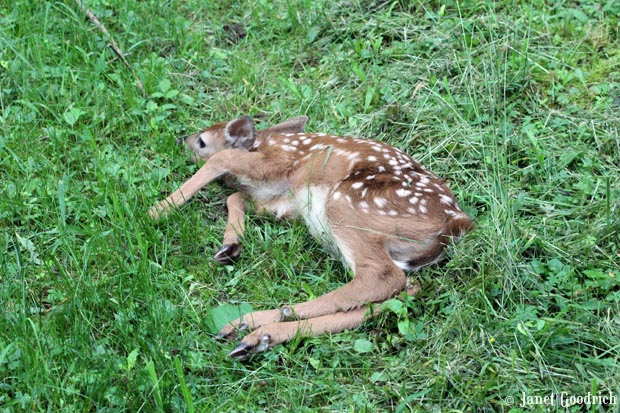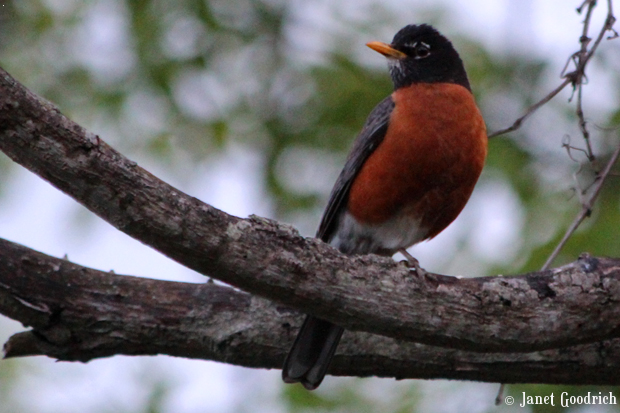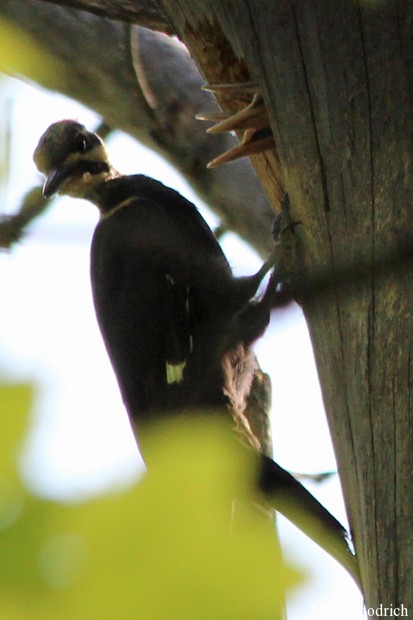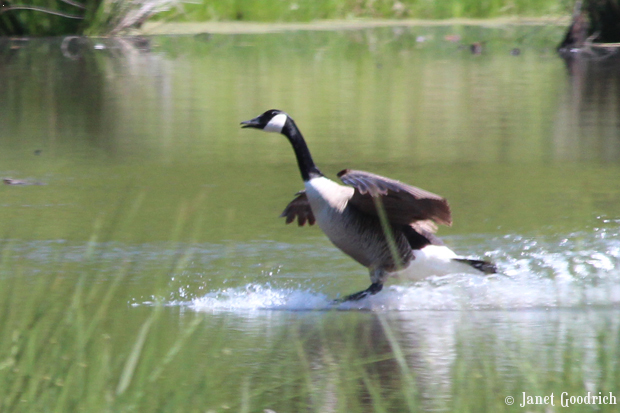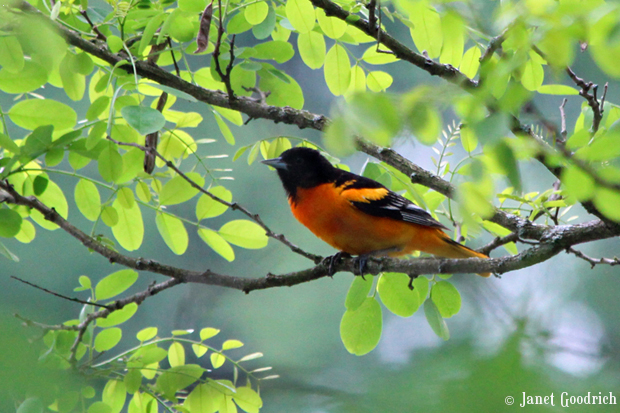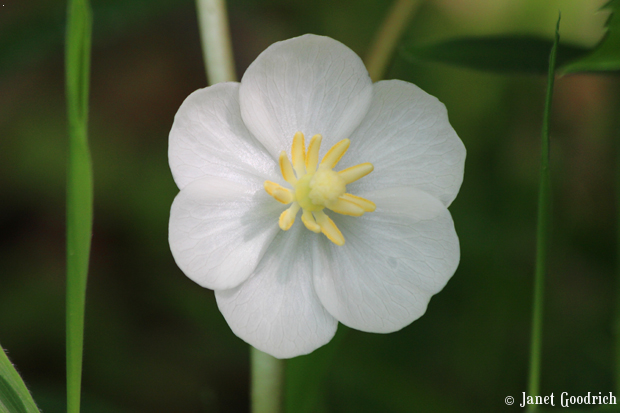Woods
-
Something there is that doesn’t love a wall
My husband took us for a walk in the woods he played in as a child. There were several of these old stone walls converging in the middle of “nowhere.”
Once, it was “somewhere.” Someone’s fields. Several someones’ fields… Three walls met at this ancient oak, which still had rusted barbed wire emerging from its bark at several points. “Good fences make good neighbors.” Or so one man in Robert Frost’s poem says.
For perspective, here it is with the dog…
How old must it be? It’s lived through many years there — long enough to see at least this group of neighbors building and mending their walls. But now the forest is reclaiming this ground.
Something there is that doesn’t love a wall,
That sends the frozen-ground-swell under it,
And spills the upper boulders in the sun;
And makes gaps even two can pass abreast…And yet, something there is that does love a wall, too — loves being reminded of a larger order that we’re all a part of, and loves, always, to be reminded of good poetry and meditation.
-
My brother’s woods
My brother took us on a walk through a tract of woodland that had several sections with several different characters. I heard many birds I never saw in the denser areas.
He pointed out lots of clues pointing to the land’s earlier life and uses, and he did a great job getting my daughters to hone their observational skills.
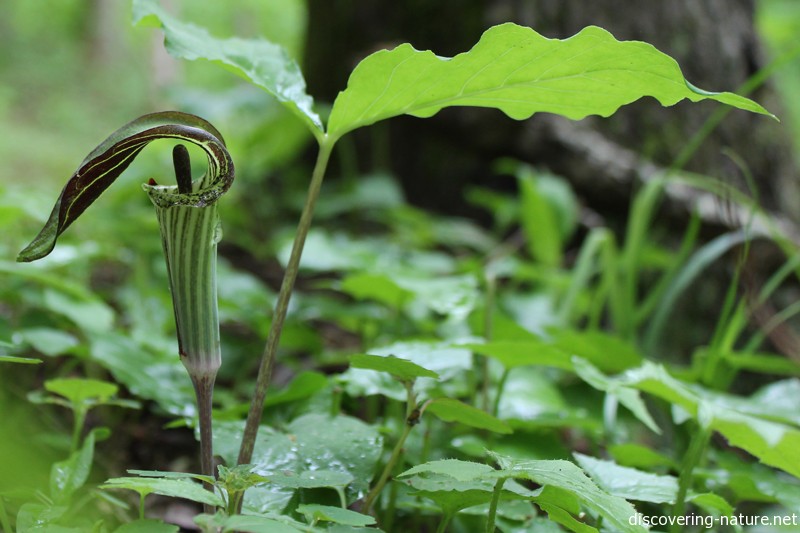
Jack in the pulpit 
Looks like wild lily of the valley, but bigger, and with different leaves 
Red-winged blackbird nest Not all the sights were wildlife…

This guy won my younger daughter’s heart for life. -
Lovely, dark and deep
I took the girls to a preserve yesterday that we haven’t been to in over a year. It contains a gorge and an old growth forest I think of as the Ent Woods. Some of the trees are enormous, and generally speaking it has a dim, brooding air about it.
An old stone bridge spans a stream that runs steeply downhill over a shale bed.
The girls (and the dog) played in the stream while I sat along the edge, watching some chipmunks playing on the steep, mossy far bank, listening to what might have been a grouse ticking somewhere, hearing a warbler I never saw, and admiring the wildflowers growing nearby.

Bird’s eye speedwell 
Trillium 
Trillium 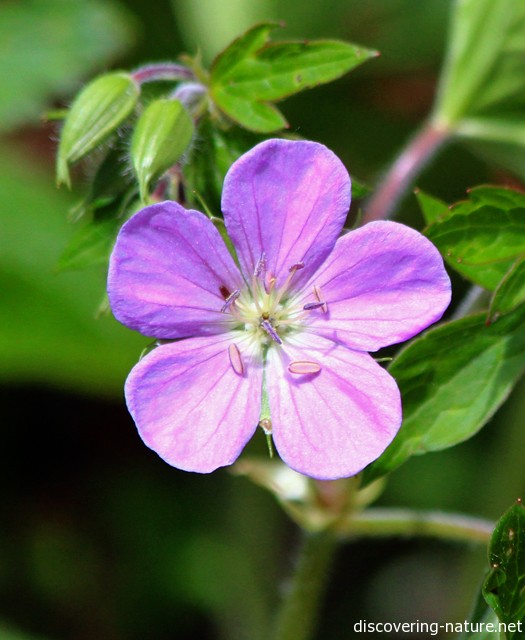
Wild geranium 
Forget-me-not 
Forget-me-not, pink version? As the girls played, I noticed they were being overseen by a tree that looked like it had a face. Maybe it’s an ent…
As I listened to the girls, it occurred to me to wonder whether they would be better off doing something more organized with other children. Are all these hours outside really what they need? It struck me that at some level I’m trying to give them something I had as a child: time to play in the woods. There were woods behind my house growing up, and a creek too. My memories of childhood involve more of the woods than of experiences with other kids. I caught toads, played with my plastic horses out there, and often found clumps of trees or streamside nooks that seemed like natural playhouses. Once, I remember coming home to a spanking; I’d been sitting by the creek not far from the house, daydreaming, while apparently my mother had been calling and calling for me. She was worried; I’d never heard a thing over the happy sounds of the flowing water.
I didn’t know as much about nature as my daughters do. They know the names and sounds of many birds — over 100 already. They know the names of more trees than I did, and what kinds of creatures thrive on the old decaying logs lying along the stream. And unlike me, who in the more innocent era of my childhood spent many hours alone in the woods, they are always attended by a parent — granted, one who tries to become invisible while keeping them in view, but one who’s there just the same, my mace and cell phone safely stored in my camera case, ready to take on any potential sinister creatures who come our way. (None ever have.)
I think that there are great advantages to these experiences. The natural knowledge they’re accumulating. The ability to be alive and interested and imaginative without props. The wealth of shared memories. The love for wild places that will mature into what Aldo Leopold called a land ethic. And then there is what I can only think of as the strengthening, quieting effect of spending time in a natural setting. Generally speaking, it’s never a bad thing to have opportunity not just to live, but to reflect on one’s living. That may be where the sense of self is most formed.
Yet spending time this way is a choice against other ways of spending it, many of them involving more structure and social interaction. Every now and then I stop to wonder whether we’re getting the balance right. I hope so. I don’t want something that’s so good in so many ways to end up isolating.
On our way out, we heard occasional bursts of birdsong. These woods are so dense, and cover so many acres, that the birds aren’t concentrated in flocks that can be easily seen. We didn’t see a blackburnian warbler, as I’d hoped we would. But we saw a black-throated green warbler, a chestnut-sided, a catbird, a few towhees, a Baltimore oriole, several robins, and, finally, a new bird:

Blue-headed vireo It was hawking insects like a phoebe, and singing.
We also saw this battered mourning cloak butterfly sunning itself.
-
Woods wonders
We saw an unprecedented five hawks in the woods yesterday. Two were Cooper’s hawks, flying together — a sobering reminder that all these beautiful spring warblers are in a daily fight for survival.
Along with the yellow warblers and blue wings, chestnut-sided warblers were working the treetops.
I heard but never saw a prairie warbler. (I even resorted to standing in a meadow with my phone, playing the recording of this warbler’s call from the All About Birds site… That was a first!)
There were two Eastern towhees digging in the leaves, rising briefly from time to time to send out their loud “Drink your tea!”
Why isn’t it in better focus? Bummer. I think it’s because I was using the hood in a spot where the sun wasn’t particularly bright. Such a beautiful bird, and I’ve been trying to get a picture for a few weeks now. Oh well.
There is a brown thrasher in the same area. He’s a rich cinnamon color and I just love to hear him, but he doesn’t pose for pictures. Last year I got a good one, though. This year the catbirds are the ones posing for pictures as they chatter in the bushes.
Once you see something once, it has a way of being visible again. So it is with oven birds. Before this year I never saw even one; now I’ve seen several.
I wanted to warn him to hush; there were hawks about. I’ve read that only 50% of oven birds survive. But he vanished into the leaf litter.
The dogwood and red trillium are blooming. The latter isn’t very prevalent, but I saw a few plants. There were lots of dogwood blooms illuminating the woods.
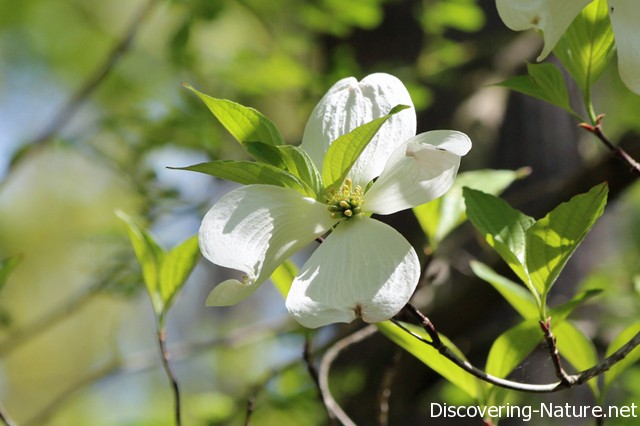
Dogwood 
Trillium 3 leaves, 3 sepals, 3 petals. This one’s drooping bloom is propped by a twig so I could snap my photo. Red trillium is also called wake robin — a wonderful, suggestive name that alludes to another favorite herald of spring.
-
Scavenger Hunt
Yesterday we finished our book work early, so we took a woodland scavenger hunt from this book and headed out into a sunny fall day to see what we could see.
The first task was to find “something older than yourself.” Not too difficult in a forest! There were numerous good-sized trees around, as well as plenty of snags and blow-downs.
How about “something smaller than your thumb”? The blooms on this white flower (yarrow?), one of the few hardies to have withstood the recent frost, fits the bill.
Older Daughter also thought of berries, which a flock of migrating robins were munching on.
Along with the dragonflies, white-throated sparrows, red-bellied woodpeckers and chickadees, the robins satisfy the third challenge: “something that flies.”
I saw the first robin of spring at this preserve, and I’m guessing these may be the last robins of fall. All were dull-colored, and travelling together in a group. At one point we counted seven in the same bush — though it was hard to get a clear view. They flapped and fluttered and clucked and shook the leaves, and generally gave every impression of wary and purposeful activity.
Next comes “something taller than you.” Easy enough: trees, as well as the hillside.
“Something that needs air.” Hmm. It would be harder to find something that doesn’t need air! How about humans for this one?
“Something younger than yourself.” Virtually all the leaves, dying in a blaze of glory after a few months…
“Something that makes you laugh.”
This guy squealed and ran from my daughters, only to find himself a yard from me before freezing in horrified indecision.
“Something that is important.” Water…
“Something that you have never seen before.” A new path, though I have no pics. It delighted us all.
“Something with a smell.” Again, no pics, but autumn has a smell all its own. I suppose it must be decay, but I think of it simply as “fall smell.”
Last, “something with spots.”
Gorgeous day, satisfying sights, time together.
-
Morning magic
This morning I took an early morning walk in the woods. The air was alive with birdsong, and at one point I found myself lured up a trail by the voice of a brown thrasher. This is a bird I’ve just started noticing this year, and its unbroken chatter always makes me smile. It’s the first bird that’s ever tempted me to use the word “loquacious.”
I never did get my eye on the thrasher. But as I neared a bend in the trail, I heard a sudden, panicked snort, followed by thudding and swishing bushes. I’d started a deer.
Rounding the bend, I saw something that startled me: something brown and flattened-looking in the trail. A few steps closer, I saw spots. A fawn. It lay at an awkward angle, and I assumed it was dead. Wondering if I’d interrupted a coyote just starting its breakfast, I reached for my Mace (always carried, never used) and considered turning around. But what if it was not dead, only injured? I couldn’t walk away till I made sure.
A little closer, and I saw that it was breathing.
I remembered the stories I’d heard about fawns so conditioned to lie still where their mothers left them that they wouldn’t move out of the path of an oncoming combine. Horrible. Yet if these stories were true, it was no real wonder that the fawn didn’t move when I approached. I walked carefully past it, thinking the gentlest and most encouraging thoughts I could, and resisting the temptation to stroke its head. It remained motionless the whole time.

Using a zoom here -- I wasn't sticking my camera right under the little creature's nose. No word seems right to describe the experience.
Later, I read what I could find about white-tailed deer and their fawns (here and here, for starters). I felt reassured that this little fawn was just doing what white-tails do, right down to its awkward position in the grass. I read that the does leave their new fawns in places with low vegetation, and there they lie, heads flattened down as much as possible. The youngest ones remain motionless even when another animal comes close. If there are two or three fawns, the doe will hide them in separate places.
This morning, with only the combine stories in mind to support the notion that the fawn was behaving normally, I walked on down the trail and then waited a minute to see if the doe returned. She had made a wide circle, and through the brush on the other side of the trail from where she’d run away, she came haltingly.
That’s her, flaring her nostrils in another loud snort of alarm at the sight of me. Not wanting to bother this little family unit any further, I headed off.
I couldn’t help but notice the music coming from the surrounding woods. As a lullaby for a young deer, it was superior to any mobile I ever found for my daughters. I recorded a few of the songs, and the sound quality is all right though my video skills are dismal. (I wish I knew how to record sound without video.)
There was the thrasher, who continued endlessly with his one-sided conversation.
Somewhere, a veery sang — a bird I’ve never seen, but whose song I’ve come to recognize. To me, it’s a sound that belongs to secluded places.
And a thrush — I think a hermit thrush, but maybe a wood thrush — sang its lonesome and lovely song. At around the halfway point, the snorts of another startled deer (or two) that had spotted me can be heard.
There were other sights and sounds too, but the fawn was the highlight. One source I looked at said that fawns who survive their first week of life stand a good chance. I’m pulling for you, little one.
-
Beaks!
Just after I expressed my wish to see little beaks at some point at the pileated nest, I did!
My husband and kids and I were taking my parents for a walk along the trail, and Mrs. P appeared.
She was there for a few minutes, then left. Mr P appeared then and went inside — briefly.
I’ve read that clutch size is typically 4 eggs, though it can vary. It’s likely that there are more youngsters in there.
I also read that adults have yellow eyes. This is true of the male, but the female’s eyes look pretty dark. But I’ll reserve judgment unless and until I get some better pictures.
This site is helpful on pileated woodpeckers.
-
Pileated Pair
Yesterday I crouched in ferny woods for 45 minutes or so, waiting for the pileated woodpeckers to show themselves. It was 6:30 in the morning when I settled myself on a damp fallen log in the tick-infested woods, within view of the nest, but not too close.
I watched red-winged blackbirds chasing one another and sounding off. A broad-winged hawk lit on a branch over my head and gave me one brief, piercing look before taking flight to escape some marauding grackels. By 7:00 I was getting chilled, my feet were falling asleep, and my trick neck was threatening to jam as I looked up wistfully at the woodpecker cavity.
Suddenly, Mrs. Pileated appeared, a silhouette against the sky on a neighboring tree. She pecked away quietly, making sure the coast was clear, then whooshed to the tree and went inside.
She wasn’t in there long before Mr. Pileated appeared. He surveyed the scene carefully from several different trees, including one right in front of me.
Then he made his move.
I left, being careful to use a different route than the one I took coming in.
It was thrilling. I think of pileated woodpeckers as belonging to the wilderness, and I felt privileged to see them going through their routines together. I still haven’t seen any little beaks poking out. How many nestlings do they have? When will they fledge? I don’t want to hound them by coming too often, but I hope I’ll see a glimpse of the youngsters at some point. I’ve never seen a juvenile pileated woodpecker.
What is it that drives me to such an activity early on a Saturday morning? I’ve been thinking about it today. My woodland explorations have come to seem like some of the most real moments of my life. It’s the ultimate “unplugged” experience, for one thing. The sights and sounds and smells are all vivid and direct. For another, there is no pretense in nature. All around me are creatures busy at the task of survival. They need food; they need to mate and raise young; they need to stake out territory to provide for themselves. It’s life and death for them, and it exposes many of my human rituals and “concerns” as simply trivial. Which brings us to humility. It’s humbling to get these glimpses of the complexity and variety and beauty of the non-human world. Humbling, and deeply inspiring.
What better way could there be to start a weekend?
-
Yellowthroats and Other Wonders
Yesterday we visited the Nature Preserve managed by the State University here in town. It was our first time back since the trees were just starting to bud, and the bright green of maples gave the woods an enchanted feel. Tossing leaves dappled the ground with shifting shadows.
Younger Daughter (8) spotted this tiny flower first thing. When I got home I looked for it in our Peterson’s First Guide, but I didn’t find it.
*Edited to add: I think it’s called bird’s-eye speedwell! Hat-tip to Ramble.
We visited the vernal pool that was so active in early spring with salamanders, wood frogs, spring peepers, and the eggs of all three.
We saw a few salamanders, frogs and turtles, but compared to before, it had the air of a place winding down. It was much quieter. But some species were still busy reproducing. We saw this enormous spider hustling along with its egg sac. Given that I’ve just reread Tolkien’s Two Towers with its memorable Spiderish Monster, I named it Shelob.
The resident brown creeper was there, too.
We ventured on past an abandoned beaver lodge and numerous stands of fern.
At the pond, a song sparrow greeted us, and directed our attention to a goose practicing her figure skating.
There were a few water snakes, sunfish, bullheads, a Baltimore oriole, yellow warblers, and catbirds buzzing about. We also saw a water-loving mammal munching among the grasses. It was leaner and quicker and darker than a muskrat, so we guessed it was a mink. Out across the water, a hermit thrush or wood thrush was singing, and two red-tails were circling together over a spot on the hillside. I’m guessing they may have a nest there.
A common yellowthroat was trumpeting his “wichity wichity wichity” call, and he let me get a few pictures, quick though he was.
There was another photographer there, one with a 200-500 lens. Mine is a 70-300. He suggested getting a hood and a polarizer to cut down on glare. I actually have a polarizing filter; it came along with the plain UV filter I bought when I first got my lens. I tried it out after I got home, but as before when I’d tried using it, I wasn’t impressed. Maybe it’s not the best quality. I don’t have a hood, but I’d like to try one. I noticed that last weekend at the Migration Celebration, quite a few folks were using them.
On the way out, I enjoyed these flowers. They’re quite tiny, and like many of the other spring flowers they’re plain white. I wish my picture had better focus (I couldn’t move far enough away for the lens), but even as is it has a certain dreamlike quality.
-
A walk in the sun
The girls and I drank in the sunshine yesterday with a saunter through the woods.
Every time we come here, we see new wildflowers appearing. This time we saw May apple.
Apparently the flower will morph into a yellow berry that can be made into jelly. (The rest of the plant is poisonous.) I’ve noticed the broad-leaved plant for a few weeks now, carpeting the ground, but this was the first time we saw the blooms.
Here’s how it looked two weeks ago.

May apple in early May This delicate flower is apparently wild geranium.
Queen Anne’s Lace makes me sneeze, but I think it’s quite pretty — not as threadbare as it looks as first glance.
We were on our way to check on the pileated woodpecker nest we discovered in April. This photo was taken on April 19, and I haven’t surpassed it — yet.
At this point I assume the adult birds are feeding youngsters. One of these days, I hope to see some little beaks poking out. But for now we content ourselves with seeing the adult birds flying to the cavity and disappearing inside, or suddenly bursting out and flying away. It must be some deep cavity! These are large birds, and presumably there are nestlings in there too, but you can’t see any trace of them inside.
We did see the adult birds change shifts — the female arrived and the male flew off. On our way in we received another treat: a chance to watch a Northern flicker excavating a nesting cavity.

Northern Flicker 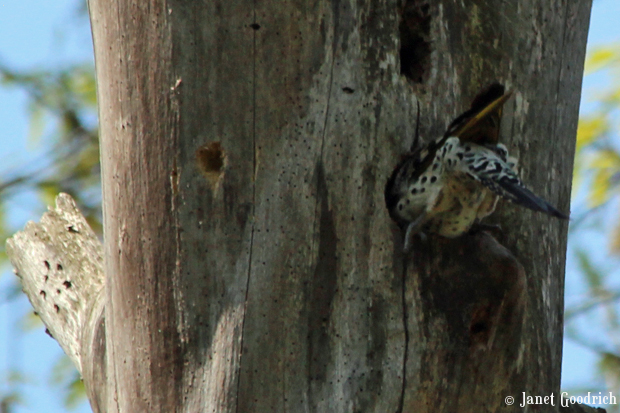
Flicker fanny... 
Flicker shaking off particles of sawdust before ducking inside for more excavating. I read that these birds are in decline. Starlings compete for their nesting sites and usually win. It made the knowledge of this nest all the more exciting. This is the fourth nest we’ve discovered: the robin in our front shrub, the pileated pair, a red-bellied woodpecker nest at another site, and now the flicker. There’s a feeling of privilege in being able to observe such things.
The day was so nice that we took another short stroll at a different place. We stumbled upon a buttercup carpet.
These are just a few of the sights and sounds we enjoyed. We also saw many yellow warblers, mockingbirds, catbirds, robins, chipping sparrows and song sparrows and tree swallows. Off in the woods, we heard a hermit thrush sing its rippling, echoing song. A Baltimore oriole flitted about in the treetops overhead, warbling conversationally.
Beauty everywhere. It was inspiring and quieting in the best ways.


















